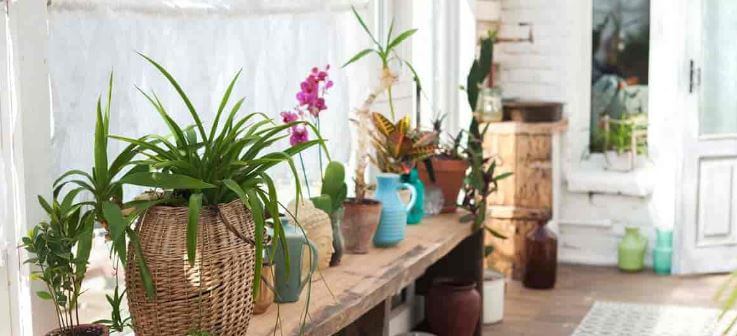Last Updated on May 26, 2023 by a Friendly Gardener
If your home or office has windows that permit you to appreciate a beautiful sunrise, why not share that bright morning light with a selection of striking indoor houseplants that also enjoy the morning sun?
East-Facing Window Light Exposure
East-facing windows are characterized by medium light exposure which can be a great advantage for numerous indoor houseplants that will not thrive in harsh sunlight. Morning light is bright, but it is considerably less intense than what the afternoon provides. The length of sunlight exposure for east-facing windows will depend greatly on the season.
Every plant depends on receiving sunlight for photosynthesis. The energy produced is then used by the plant to convert carbon dioxide into nourishment and oxygen. Light contributes to a plant’s health, development, growth, flowering, and reproduction. Each plant species has light requirements. Desert plants will require much more light than tropical rainforest plants living under a canopy of trees.
Plants located approximately 3 feet in front of an east-facing window receive direct bright light while those at 5 feet or more will receive indirect light in the morning. In the afternoon, sunlight exposure is reduced making these windows ideal for plants that are at risk of scorched foliage. Here are some of our favorite east-facing window plants.
Best Plants for East-facing Windows
Anthurium

Fashionable for their fiery red spade-shaped blooms, the anthurium is a flowering epiphyte plant, sometimes referred to as the Flamingo flower or the Laceleaf. Blooms can also be found in other hues including pink or peach. Foliage is also shaped like spades and is a dark, glossy, vibrant green. The Anthurium genus includes roughly 1,000 species of epiphytes. Epiphytes will attach to other vegetation in the wild and take nourishment and moisture from the air. If an anthurium does not receive light, it will not bloom. Mostly free of disease and pests, this houseplant will thrive and bloom when benefitting from a position by an east-facing window.
Boston Fern
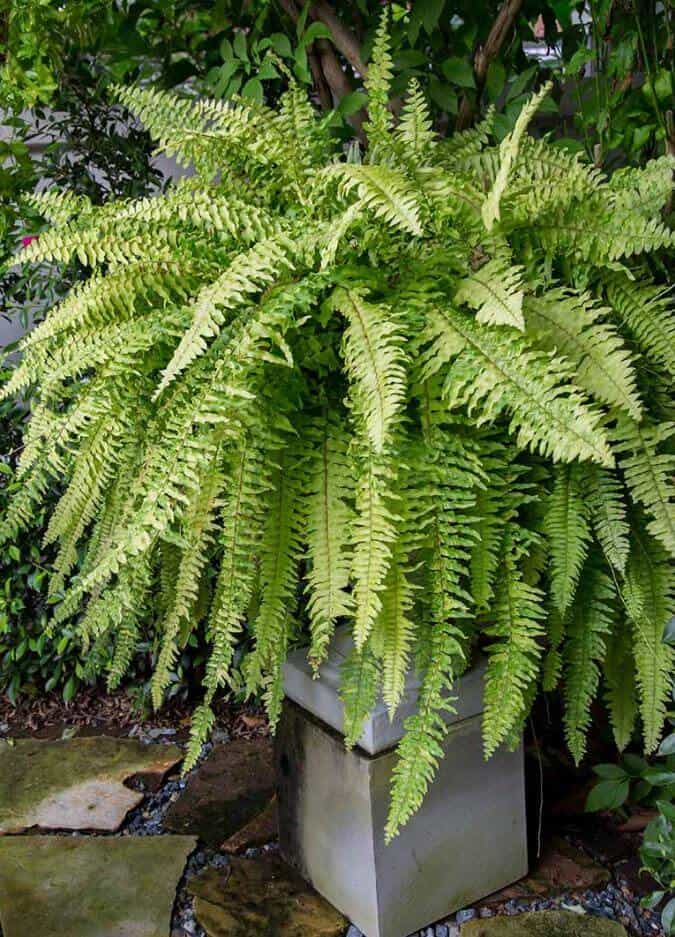
The fluffy-appearing Boston Fern known botanically as the Nephrolepsis Exaltata boasts a generous display of vivid green fern fronds. If these fronds receive too much direct light, they will scorch. If they are placed in an area that is too shaded, fronds will appear sparse, and their characteristic fluffiness will disappear. Boston Ferns make excellent east window plants, especially if your window has a sheer curtain for a bit of added protection.
Calathea
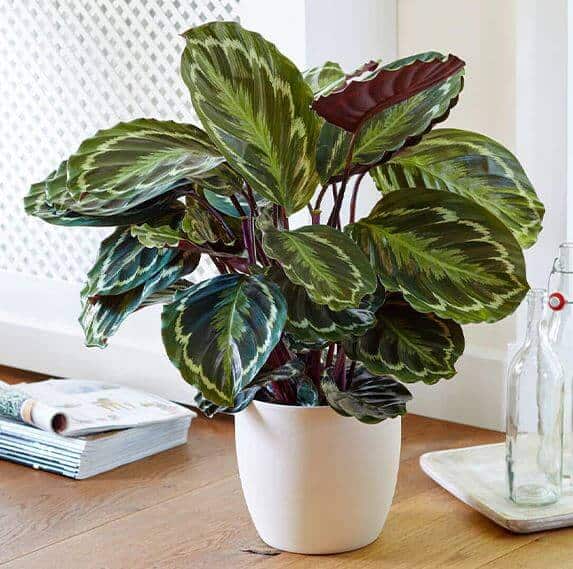
The Calathea genus includes more than 200 varieties of flowering houseplants that are popular due to their colorful leaves which will generally include stripes of white, purple, or light green. Calatheas need filtered sunlight that is medium in intensity to thrive. Excessive sunlight exposure can cause the foliage colors to fade. East-facing windows are ideal, but these plants do need some protection from the morning sun, so either a sheer curtain or a positioning should be found that protects them from too much light.
Dumb Cane
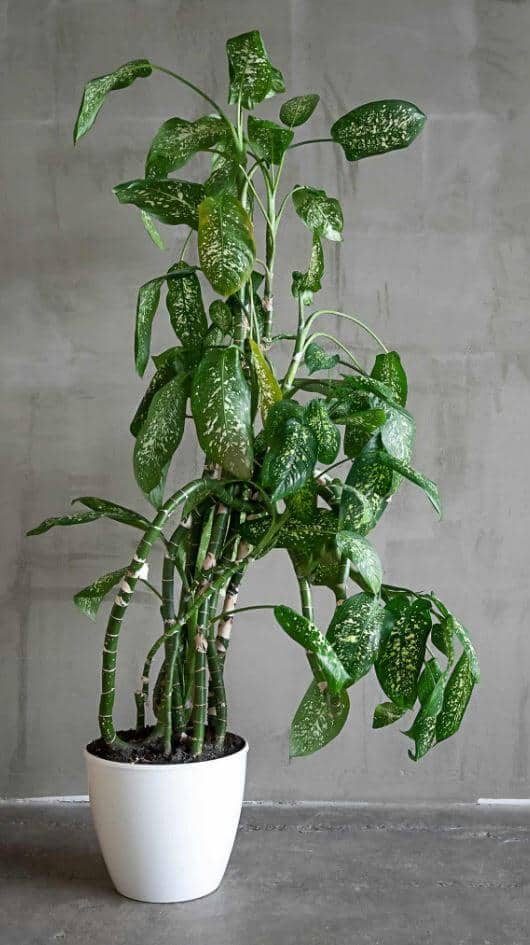
Dieffenbachia or Dumb Cane do very well in full shade, but they will thrive when exposed to medium indirect, bright sunlight. When positioned between three and five feet from an east-facing window, they will grow and thrive, producing magnificent generously sized leaves with light green patterns on a deeper green background. Dumb Cane does contain calcium oxalate crystals, so it is toxic to both humans and pets.
Monstera Plants

Sometimes referred to as Swiss Cheese plants due to their unusual foliage that develops fenestrations or holes, Monstera plants are sought-after for their leaves. The leaf fenestrations develop with maturity. The two most popular varieties are the Monstera adansonii and the Monstera deliciosa. Monstera species generally require at least four to six hours of bright, direct sunlight daily. A position on an east-facing windowsill or directly in front of the window will ensure your plant receives adequate sunlight exposure.
Nerve Plant

The Fittonia albivenis is a favorite among indoor plants for an east-facing window. Popular thanks to delicate green leaves with pink or white veining. These plants do well when sunlight intensity is medium to low. If your east-facing window is protected by a sheer curtain, fittonia will thrive thanks to cooler temperatures and filtered light exposure. When Nerve plants are exposed to too much sunlight, foliage dries out and becomes brown and crispy.
Peace Lily

Botanically called the Spathiphyllum, the attractive Peace Lily is a houseplant in demand. These plants are well-loved as ornamental accents to indoor décor, as well as for their symbolism. Although not real lilies, they are appreciated because they can adapt to various sunlight conditions. They should, however, never be exposed to direct sunlight for any length of time as this can scorch and dry out leaves. To benefit from the natural light, offered by an east-facing window, position this plant three to five feet from it. The plant will receive adequate light to survive but will not be at risk for harm. The Peace Lily can be placed in an east-facing window or right in front of one if there is a sheer curtain.
Schefflera
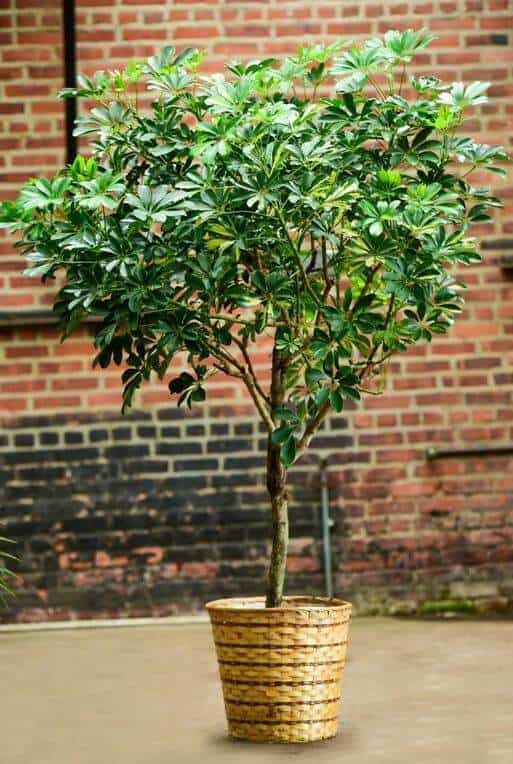
A lovely, flowering, tree-like plant the Schefflera boasts from 600 to 800 species in its genus. One of the more beloved is the “umbrella plant” as its foliage grows in a round design that resembles an umbrella. The Schefflera does best when exposed to medium, bright light. Hence it will thrive when positioned approximately three feet from a window facing east. It can also be placed directly in the window if there is a sheer curtain.
Watermelon Peperomia

Watermelon Peperomia is a delightful smallish houseplant that has heart-shaped foliage with dark and light green stripes such as those seen on watermelon rinds, hence the name. The Watermelon Peperomia finds its native habitat in South America, where it is an understory plant growing in forests heavy with vegetation. They flourish in indirect medium to bright sunlight. Your Peperomia should be placed in an east-facing window that has a sheer curtain, otherwise, it can be placed back somewhat from the window. Excessive sunlight exposure will scorch leaves or fade their beautiful stripes.
A Final Word
East-facing windows offer houseplants lots of bright morning light. There will be some variations in the amount of light due to the seasons and the length of daylight. Consequentially, depending on the individual plant, it may need to be moved closer or further away from the window.

